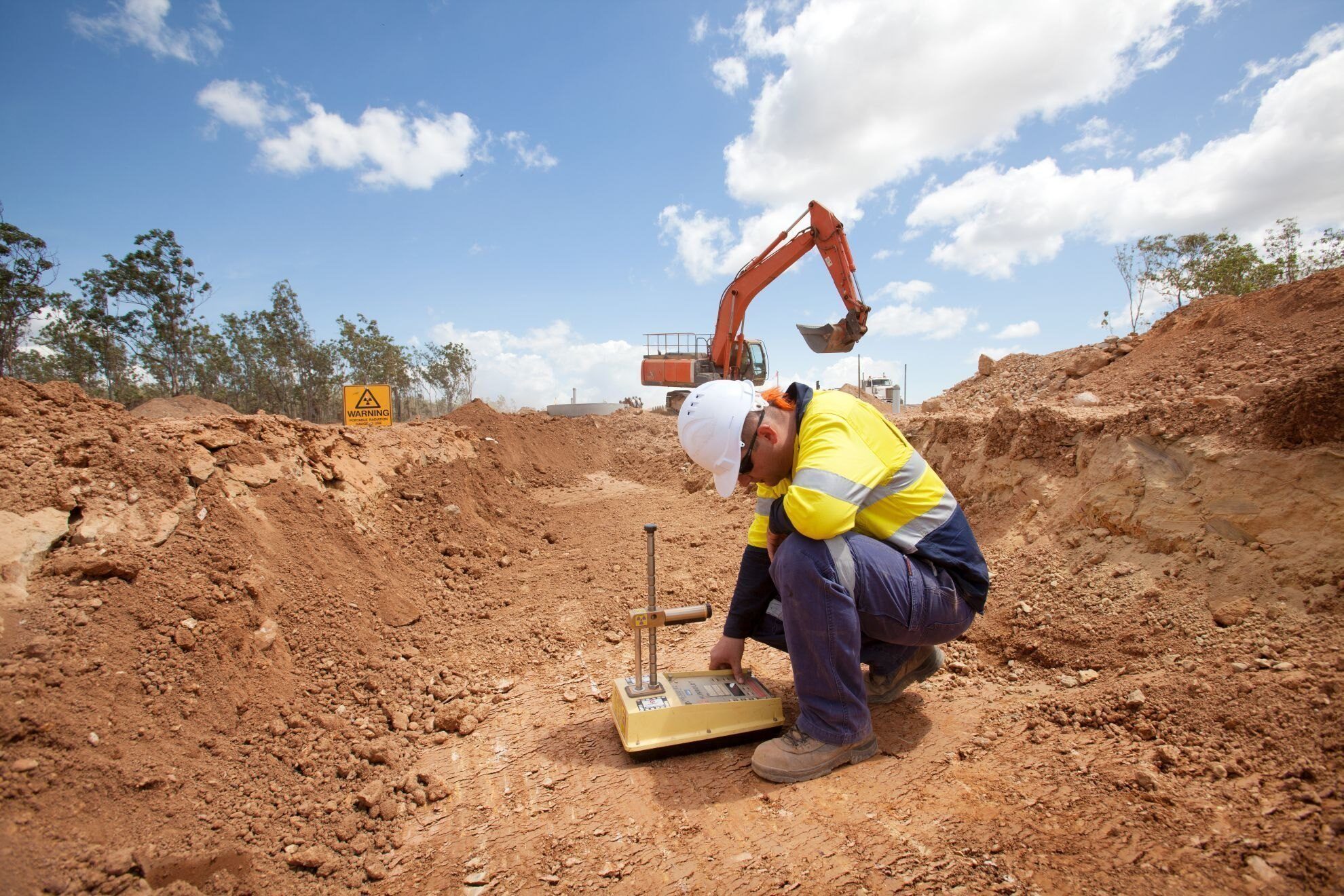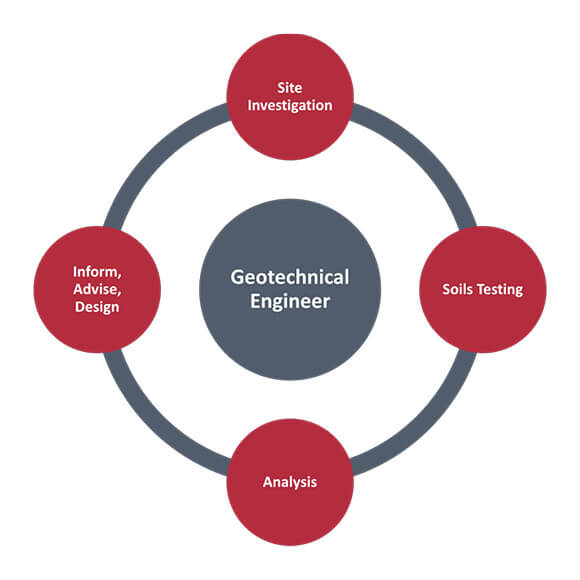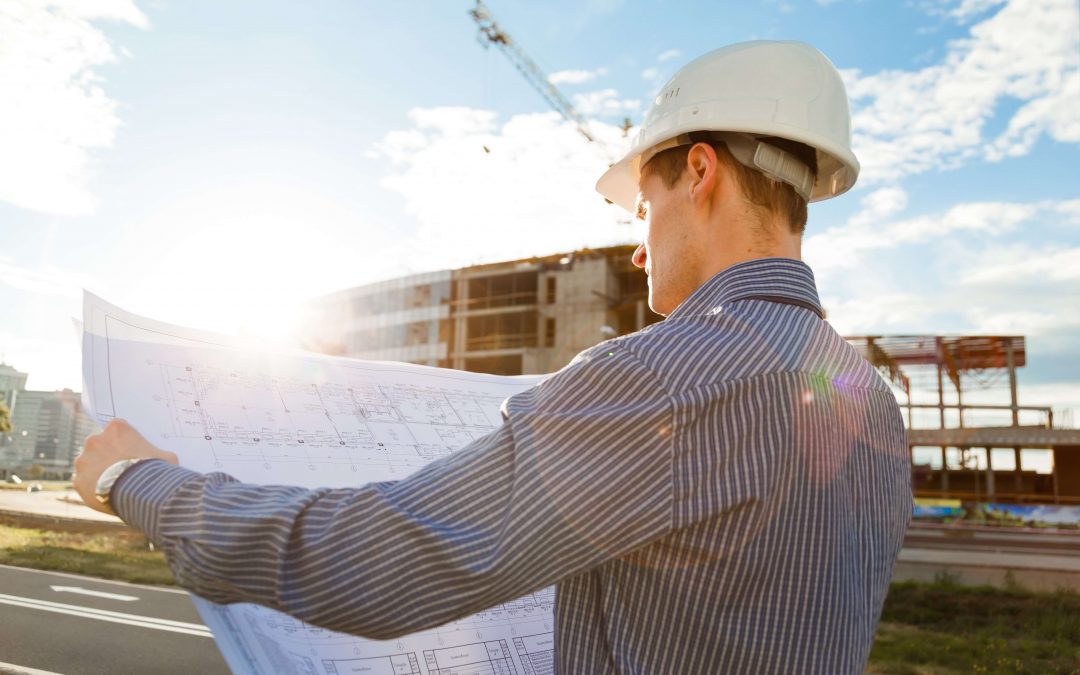More About Geotechnical Engineering For Construction Projects
More About Geotechnical Engineering For Construction Projects
Blog Article
Rumored Buzz on Geotechnical Engineering For Construction Projects
Table of ContentsThe Facts About Geotechnical Engineering For Construction Projects UncoveredThe Greatest Guide To Geotechnical Engineering For Construction ProjectsGeotechnical Engineering For Construction Projects Can Be Fun For EveryoneSome Known Factual Statements About Geotechnical Engineering For Construction Projects All about Geotechnical Engineering For Construction ProjectsAbout Geotechnical Engineering For Construction ProjectsOur Geotechnical Engineering For Construction Projects Ideas
and Kovacs, W. (1981 ), An Intro to Geotechnical Engineering, Prentice-Hall, Inc. Deep Scan Technology (2023 ): Deep Check Technology uncovers concealed frameworks at the website of Denmark's tallest building. "Geofrost Coring". GEOFROST. Fetched 20 November 2020. Han, Jie (2015 ). Principles and Method of Ground Improvement. Wiley. ISBN 9781118421307. RAJU, V. R.Ground Improvement Technologies and Case Histories. Singapore: Research Study Posting Solutions. p. 809. ISBN978-981-08-3124-0. Ground Renovation Concepts And Applications In Asia. Pariseau, William G. (2011 ). Layout analysis in rock auto mechanics. CRC Press. Hegde, A.M. and Palsule P (Geotechnical Engineering for Construction Projects).S. (2020 ), Performance of Geosynthetics Reinforced Subgrade Subjected to Repeated Car Loads: Experimental and Numerical Studies.
Cengage Knowing, Stamford, 666 p. Atkinson, J., 2007. The auto mechanics of soils and foundations. The Observational Approach in ground design concepts and applications.
Some Of Geotechnical Engineering For Construction Projects
Laboratory and area screening plays an important duty in this process. By removing examples from the earth's subsurface and applying a collection of examinations, geotechnical designers can forecast the behaviour of soil layers and assess their suitability for various building and construction endeavours. The essence of geotechnical design in civil engineering can not be overemphasized, attributable to several variables: The initial action in any kind of geotechnical research involves figuring out the dirt kind at the construction website.
Understanding these attributes makes certain that just suitable soil kinds are picked for the growth, thereby averting potential architectural failings. The structure works as the bedrock of any building and construction project. Selecting the ideal structure kind is a choice that pivots on the comprehensive analysis provided by geotechnical engineering. This guarantees the durability and stability of structures by accommodating the lots they will birth.

Geotechnical website examination is an essential action in the planning and implementation of any type of building and construction task. It includes the collection and analysis of data associated with the physical properties of soil and rock under a recommended building site. This information is essential for the style and construction of secure, secure, and lasting structures.
Some Of Geotechnical Engineering For Construction Projects
, additionally recognized as subsurface expedition, includes a series of activities aimed at figuring out the dirt, rock, and groundwater problems at a construction site. The primary objectives are to identify potential geotechnical risks, examine the design properties of subsurface materials, and provide suggestions for the style and building of foundations, keeping walls, and various other structures.
This might include geological maps, aerial photos, previous examination reports, and historic information. The workdesk research study assists in determining prospective geotechnical issues and preparing the succeeding fieldwork. Following the desk research, a website reconnaissance is conducted to visually examine the site and its surroundings. This involves observing the topography, drainage patterns, existing frameworks, plants, and any type of indicators of instability or disintegration.
The Facts About Geotechnical Engineering For Construction Projects Revealed
Shallow examination pits are excavated to straight observe and example the soil and rock. This approach use this link serves for studying the top layers of the subsurface and determining near-surface risks. Non-invasive geophysical approaches, such as seismic refraction, ground-penetrating radar (GPR), and electrical resistivity tomography (ERT), are utilized to map subsurface problems and discover abnormalities.
Soil and rock examples accumulated during the area examination are subjected to lab screening to determine their physical and mechanical homes. Usual laboratory tests consist of grain dimension analysis, Atterberg limitations, compaction examinations, triaxial shear examinations, and combination examinations. These tests offer essential data for geotechnical analysis and style. The information accumulated from the workdesk research, site reconnaissance, area investigation, and lab testing are examined and analyzed to develop a thorough understanding of the subsurface problems.
The primary benefit of geotechnical site investigation is ensuring the security from this source and stability of structures. By comprehending the subsurface conditions, engineers can develop structures and various other architectural components that can hold up against the lots and environmental pressures they will be subjected to. This decreases the threat of negotiation, subsidence, and structural failing.
Not known Incorrect Statements About Geotechnical Engineering For Construction Projects
Recognizing dirt characteristics can lead the choice of excavation strategies, dewatering approaches, and ground enhancement measures. This makes sure efficient and risk-free construction techniques. Geotechnical site examinations are often needed by developing codes and laws. Complying with these demands ensures compliance with legal and safety and security requirements, staying clear of potential legal obligations and project delays.
This details is important for job managers, architects, and professionals in establishing practical schedules, budget plans, and backup strategies. Geotechnical Engineering for Construction Projects. Skyscraper Structure in a Coastal AreaIn a coastal city, a high-rise property structure was intended on a website with believed loose sand deposits and a high water table. A comprehensive geotechnical investigation, including borehole boring, CPT, and geophysical studies, was conducted
Geotechnical Engineering For Construction Projects - Truths
Based on these searchings for, the foundation layout was changed to consist of deep stack foundations extending right into steady strata, and ground enhancement strategies, such as vibro-compaction, were executed to mitigate liquefaction threats. This positive strategy guaranteed the security and stability of the structure while preventing costly post-construction removal. Facilities Development on a Sloping TerrainA major infrastructure task, including the construction of a freeway and bridges, was intended on a hilly surface with high slopes.

The Leaning Tower of Pisa (Italy), a renowned building marvel, is well known for its unintentional tilt from substantial geotechnical problems. The tower's structure was inadequately created to manage the soft, unsteady soil underneath it, leading to unequal negotiation and its distinct lean. Our world is populated with impressive infrastructure projectsfrom towering high-rises to stretching bridgesall standing statement to the development of the different building and construction tools and methods offered.
Geotechnical design is a specialized area within civil design that focuses on researching the behavior of earth materials. This branch dives deep into the groundinvestigating just how the soil, rock, and groundwater at a building website can influenceand be affected bythe infrastructure that we set up on and right into them. Prior to a single brick is laid or a concrete structure put, geotechnical designers probe into the earthgathering important information about the site's dirt make-up, rock framework, and groundwater degrees.
What Does Geotechnical Engineering For Construction Projects Do?

is a device utilized to examine the honesty and load-bearing ability of heaps during setup, leveraging the principle of wave breeding. It maximizes construction efficiency by offering real-time examinations, therefore guaranteeing risk-free and efficient stack foundations. One of the functional applications of geotechnical design entails determining and implementing the ideal techniques for structure building and construction.
Load driving stands for even more than the simple act of placing structural aspects into the ground. On the other hand, it is a thoroughly orchestrated process of transferring a structure's lots past the less stable soil layers closer to the surfacedown to the much more significant strata that lie beneath. When it comes to pile driving, consider just how geotechnical engineers expertly use this strategy to equally disperse the structure's weight.
Report this page